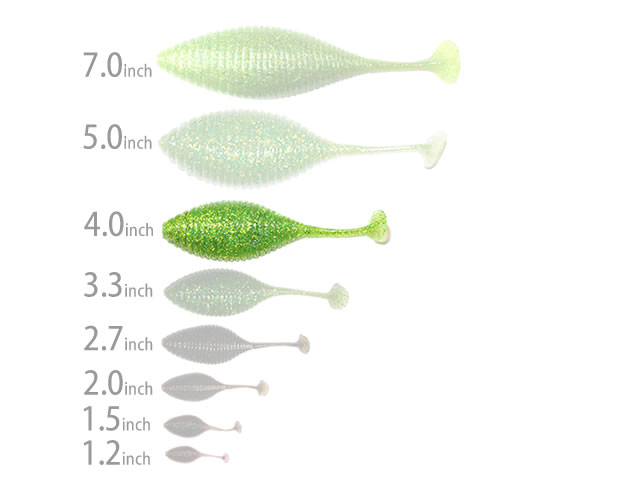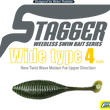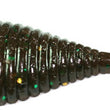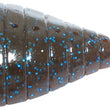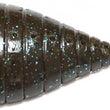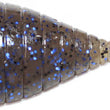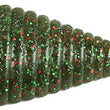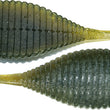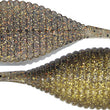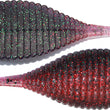| Quantity | 4 |
|---|---|
| length | 102mm |
| Weight | Approximately 15.5g |
| Recommended Offset Hook Size | #5/0 |
If the 7-inch Stagger Wide is a large Gill, the 4-inch is a bite-sized small Gill for bass that live everywhere. It is a standard worm that can be used for a wide range of fishing, from ponds to big lakes.
Pursuit of "water pushing" The Stagger Wide Type is a worm that pushes water upwards.
I have been advocating "water displacement" for some time. The water displacement I sought for the Stagger Wide is a subtle "curl" of water on the water surface. This curvature cannot be reproduced with the horizontal water displacement seen on flat-side baits (A).
This distinctive body shape is designed to create a powerful vertical water push against the water surface (B).
Even if you let the trace range dive a little rather than just below the surface, the water pushing power is strong, so it is possible to intentionally express the water's distortion.
"Slide Wide Action" Creates new waves on the surface and underwater!
In addition to pushing water, the Stagger Wide also features a new movement in the lure's action. This includes not only a rolling body movement, but also a sliding action that moves zigzag, twisting the body as if pushing through the water (C).
 The body twists from the tail and then bounces back from its limit, creating a sliding action from side to side. Its greatest features are the upward water push by the fat, flat body and the torqueful kicking power created by the twisting of the entire body.
The body twists from the tail and then bounces back from its limit, creating a sliding action from side to side. Its greatest features are the upward water push by the fat, flat body and the torqueful kicking power created by the twisting of the entire body.
 An interesting trick is to set the hook in the opposite direction (D) to create a fine sliding wide action. Try using it depending on the situation.
An interesting trick is to set the hook in the opposite direction (D) to create a fine sliding wide action. Try using it depending on the situation.
TEXSAS RIG (3.5g and up)
At first glance it may seem overweight, but its flat body quickly engages with the water, allowing it to instantly create a sliding action after retrieval. The key to this sliding action is to lower its head.
NO-SINKER
This is the most recommended rigging style. If you start retrieving immediately after hitting the water, there will be little tangling in the water, resulting in only a straight action. In this case, a fairly slow retrieve is possible. If you let it sink a little and twitch it, it will act just like a stick bait.
If you want to create a sliding action with a no-sinker rig, you should wait until the tail of the lure has tangled with water after it has sunk before starting the retrieve.
Important! How to set the hook
- Hook setting is important to effectively express the action of the Stagger Wide.
- The settings are the same when using an offset hook with a no-sinker, Texas rig, downshot rig, jig rig, or caro rig.
 Insert the hook into the center of the head
Insert the hook into the center of the head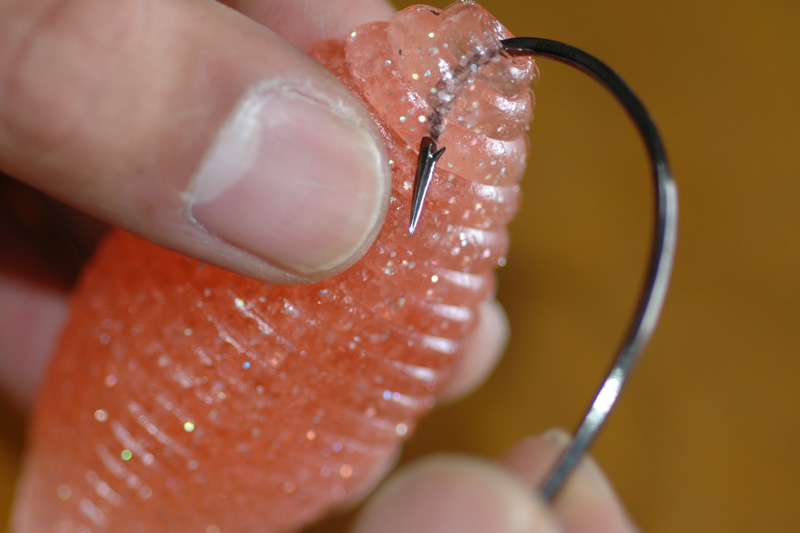 Align the needle firmly in the center and remove the tip. The wide version has a dot so it's easy to find the center.
Align the needle firmly in the center and remove the tip. The wide version has a dot so it's easy to find the center.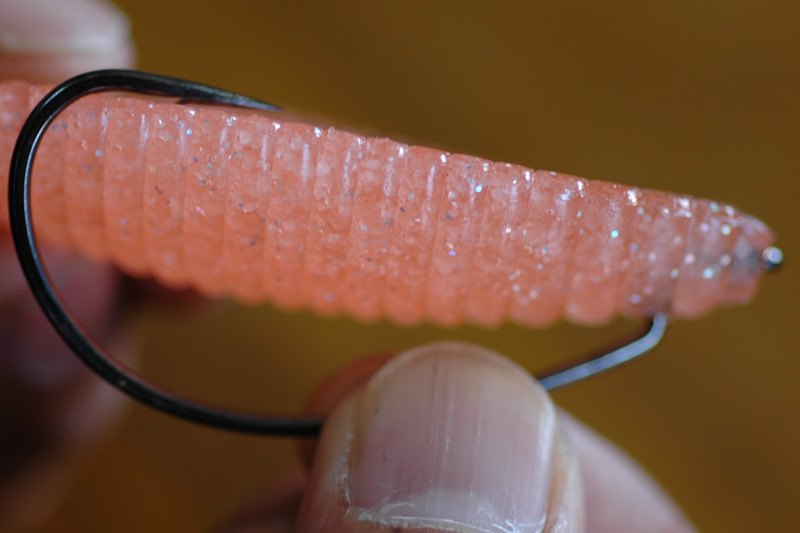 Check the position of the hook by placing it sideways.
Check the position of the hook by placing it sideways. Once the position is decided, insert it firmly into the center.
Once the position is decided, insert it firmly into the center.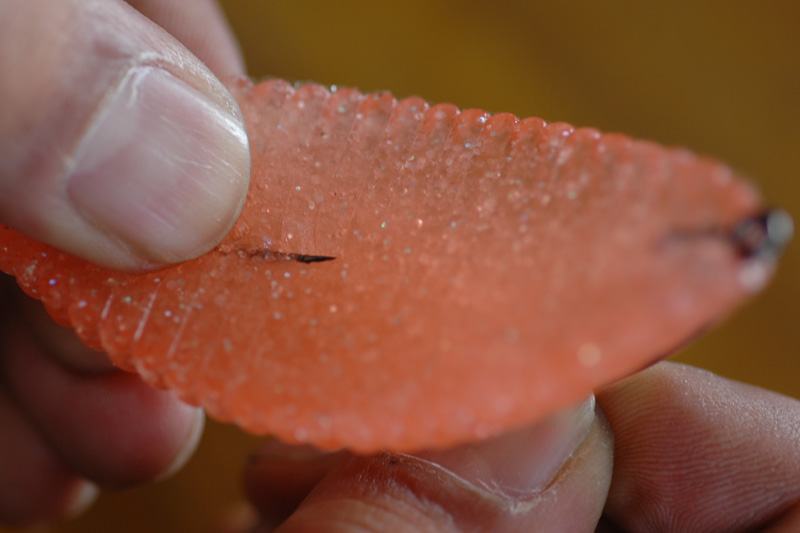 This is important!
This is important!Don't pull the hook tip all the way out to the barb!
Stop when you can see the tip of the hook.
Normally you would pull the hook tip all the way out and then bury it a little, but with a wide lure it's important not to pull it all out.
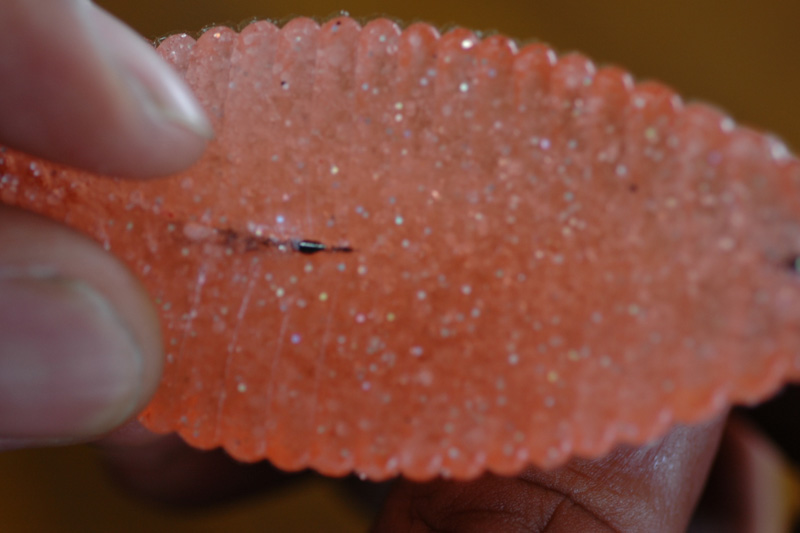 Once the tip of the hook is slightly protruding, push it back in.
Once the tip of the hook is slightly protruding, push it back in.Only a small portion of the hook should be sticking out.
This simple setting will prevent the hook from spinning around when retrieving or swimming.
 If you bury the tip of the hook a little at the top, it's a normal setting.
If you bury the tip of the hook a little at the top, it's a normal setting.If you only bury the tip of the hook, it will spin. It's not that it's bad for it to spin, but it should be set so that it doesn't spin normally, and when it gets caught on weeds or something and you try to remove it, the hook will slip out of place and spin around.
This quick action is very similar to the movement of a gill.
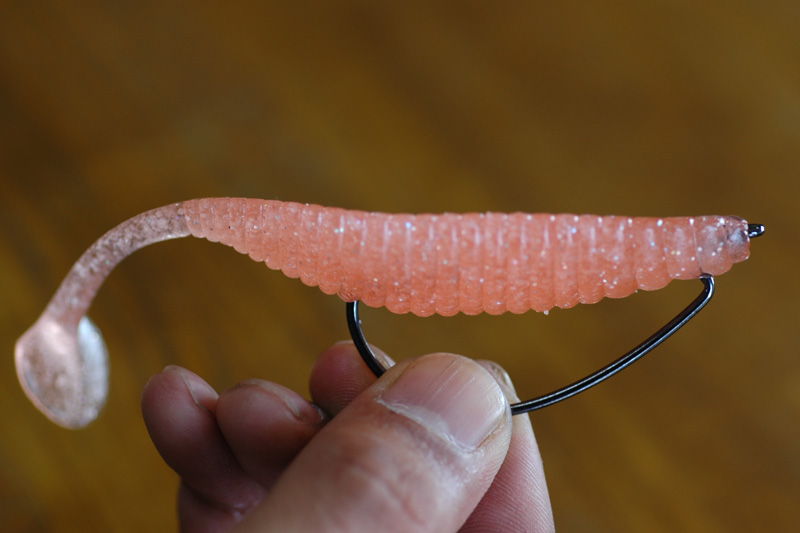 Completed!
Completed!



